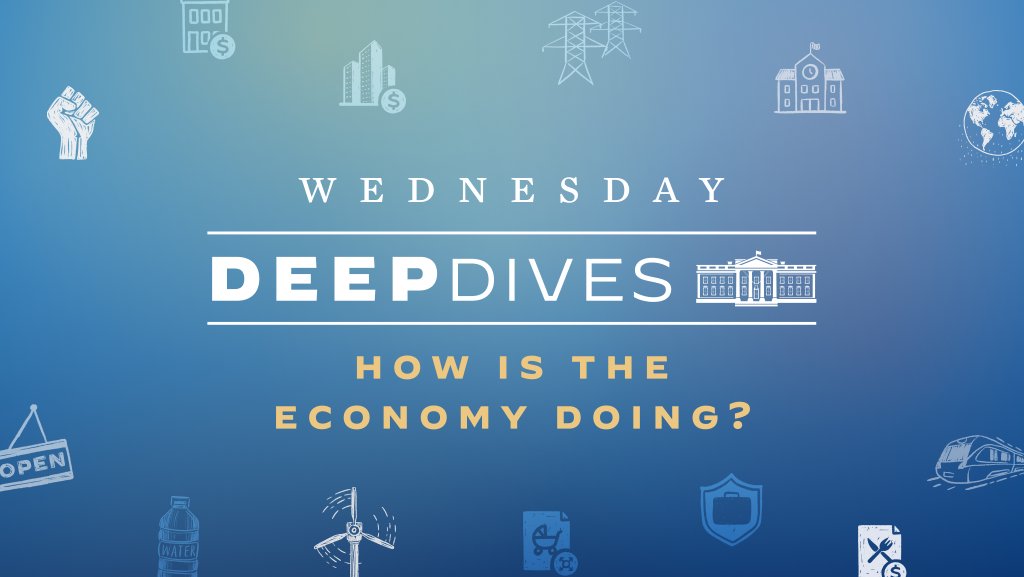
The Bipartisan Infrastructure Framework takes critical first steps to address economic inequities and decades of infrastructure neglect that have disproportionately impacted communities of color.
Here's how the plan will advance racial equity — #WhiteHouseDeepDive THREAD🧵:
Here's how the plan will advance racial equity — #WhiteHouseDeepDive THREAD🧵:
Today's digital divide is stark.
Black families are 9% less likely to have high-speed internet than their white peers – and Latino Americans are 15% less likely. Roughly 35% of individuals living on Tribal lands lack access to broadband internet.
Black families are 9% less likely to have high-speed internet than their white peers – and Latino Americans are 15% less likely. Roughly 35% of individuals living on Tribal lands lack access to broadband internet.
The Bipartisan Infrastructure Framework will help close the digital divide by bringing down internet service costs across the board and delivering high-speed broadband to every American home -- making high-speed broadband more affordable for all.
There are up to 10M homes and nearly 400,000 schools and child care facilities with lead service lines and pipes. Communities of color face disproportionate risks to lead exposure.
The Bipartisan Infrastructure Framework will replace 100% of those lead pipes and service lines.
The Bipartisan Infrastructure Framework will replace 100% of those lead pipes and service lines.
Asian American and Black American workers commute by public transit at nearly four times the rate of white workers. For example, in New York City, the average Black resident spends 110 minutes more per week commuting to work than the average white resident.
The Bipartisan Infrastructure Framework's $48.5B investment will modernize transit, improve accessibility, and deploy thousands of zero-emissions vehicles.
This investment in public transit will reduce commute times and create economic opportunities in communities of color.
This investment in public transit will reduce commute times and create economic opportunities in communities of color.
Diesel air pollution is linked to asthma and health issues that disproportionately hurt communities of color.
The Bipartisan Infrastructure Framework will deploy over 35,000 electric school buses nationwide, helping districts buy clean, American-made, zero-emission buses.
The Bipartisan Infrastructure Framework will deploy over 35,000 electric school buses nationwide, helping districts buy clean, American-made, zero-emission buses.
26% of Black Americans and 29% of Latino Americans live within three miles of a Superfund site. The Bipartisan Infrastructure Framework will invest $21B to clean up Brownfield and Superfund sites and remedy environmental hazards like abandoned mines and orphaned oil & gas wells.
People of color are more likely to live in areas most vulnerable to flooding and other climate change-related weather events. For example, in the wake of Hurricane Harvey, Black and Latino residents were twice as likely to report lost income.
The Bipartisan Infrastructure Framework invests $52B to help communities build resilience by elevating roads and bridges, hardening physical infrastructure, and winterizing the power grid. It will also fund emergency response strategies and make it easier to buy flood insurance.
Across the board, communities of color are more likely to be burdened by pollution.
The Bipartisan Infrastructure Framework meets this challenge by investing in a clean energy grid which will mitigate pollution impacts, enhance reliability and resilience, and lower costs.
The Bipartisan Infrastructure Framework meets this challenge by investing in a clean energy grid which will mitigate pollution impacts, enhance reliability and resilience, and lower costs.
Significant portions of the interstate highway system were built through Black neighborhoods, destroying homes, schools, churches, and parks and causing lasting disconnection and disinvestment for residents who stayed.
The Bipartisan Infrastructure Framework creates a first-ever program to reconnect communities divided by transportation infrastructure. The program will fund planning, design, demolition, and reconstruction of street grids, parks, or other infrastructure.
Read more about the Bipartisan Infrastructure Framework and its investments to close racial equity gaps and help build healthy, successful communities nationwide: whitehouse.gov/briefing-room/…
• • •
Missing some Tweet in this thread? You can try to
force a refresh






